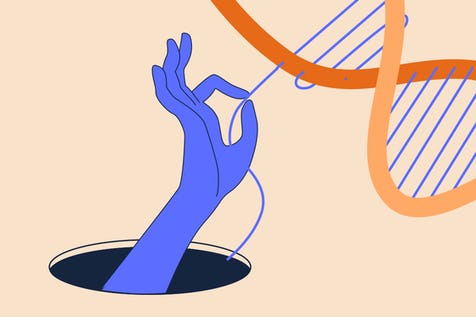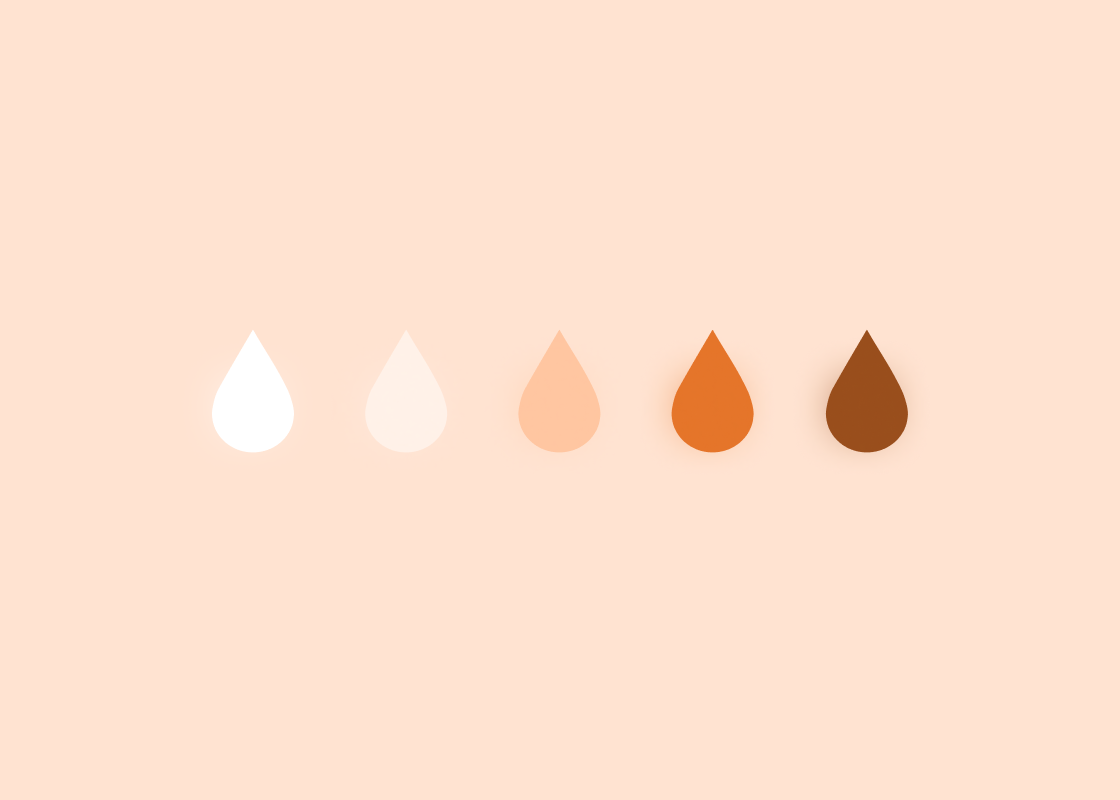You've probably heard about the term "hormones" before. They are chemical messengers that help regulate essential processes occurring in your body.
But what are fertility hormones?
Well, fertility hormones play a role in reproduction, sexual development, sexual drive, and regulating your menstrual cycle.
The four main fertility hormones involved in your menstrual cycle are the following:
- Follicle-stimulating hormone
- Luteinizing hormone
- Progesterone
- Estrogen
You can't do without one or the other. Each hormone carries a specific role and responsibility in your menstrual cycle, which we will explore in this article.
So, grab a coffee, and let's begin!
Brief Overview Of The Menstrual Cycle
Your menstrual cycle is divided into four main phases:
- Menstrual phase. During this phase, your uterus sheds its lining through the vagina in a process called menstruation.
- Follicular phase. This phase starts on the first day of your cycle and continues until the day of ovulation. An egg (or rarely, two) will fully mature during the follicular phase.
- Ovulation. During ovulation, the mature egg is released from the ovary into the fallopian tube, ready for fertilisation.
- Luteal phase. The ruptured follicle that has released the egg during ovulation becomes the corpus luteum, which then secretes mainly progesterone. This hormone helps your body prepare for possible fertilisation and implantation (attachment of a fertilised egg to the wall of your uterus, leading to conception).
Let's explore the role of hormones in each phase of your cycle.
Follicle-stimulating hormone (FSH)
What it is
The follicle-stimulating hormone is a gonadotropic hormone. These hormones are produced by the pituitary gland, which is a small gland located on the underside of your brain [1].
As per their name, gonadotropic hormones act on the gonads, which are the ovaries in females and testes in males.
What it does
The name follicle-stimulating hormone gives a massive clue to its function. During the follicular phase of the menstrual cycle, FSH stimulates the growth and maturation of the follicles so that a mature egg can be released into the fallopian tube (ovulation). Follicles are egg-containing pods found in your ovaries.
As some of the follicles begin to develop due to the stimulation of FSH, the follicles begin to produce and release estrogen.
Its cycle patterns
Like many other hormones, the level of FSH in your body will change and fluctuate throughout your cycle. FSH levels begin to rise during the early follicular phase, which kickstarts the maturation of the follicles in your ovary [2].
FSH levels will then peak during the LH surge (we'll talk about the LH surge later in the article). After ovulation, FSH levels drop and will remain low to prevent the maturation of new follicles. These levels will rise slightly 4 days before menstruation occurs, and the cycle repeats [3].
To sum it up, the rise in FSH levels during the follicular phase stimulates the growth of follicles containing an immature egg. Only one dominant follicle will develop with a mature egg inside, and this egg will be released during ovulation.
Luteinizing hormone (LH)
What it is
The luteinizing hormone shares this similarity with FSH; It's a gonadotropic hormone as well, meaning that it acts on the ovaries in females.
The hypothalamus (part of your brain) is responsible for secreting gonadotropin-releasing hormone (GnRH) that signals your pituitary gland to secrete both LH and FSH.
What it does
LH is essentially a chemical messenger that jolts your reproductive system into action! For starters, this hormone stimulates the release of steroid sex hormones from the ovaries.
Other than that, this hormone also plays a crucial role in the ovulation process of your menstrual cycle. Around the middle of your cycle, a sudden spike in LH levels occurs. This LH surge initiates a vital event called ovulation, which is the release of a mature egg into your fallopian tube.
The surge in LH levels marks one of the best times for business in the bedroom if you're looking to get pregnant!
Its cycle patterns
Well, LH levels remain relatively low during the first part of your cycle. Around 35-44 hours before ovulation occurs, the LH surge begins [4].
Once ovulation has occurred, LH levels will fall back down. During this time, these lower levels of LH still stimulate the corpus luteum to produce progesterone, which is required for supporting the early stages of pregnancy if fertilisation takes place.
Progesterone
What it is
Progesterone is a female sex hormone produced by the corpus luteum. During the second half of the menstrual cycle, the ovarian follicle that has ruptured and released the mature egg becomes the corpus luteum. Corpus luteum is, in fact, a Latin term that translated directly to "yellow body," symbolising its appearance.
What it does
Progesterone works hard to prepare your body for pregnancy. After all, your body is rooting for you to get pregnant!
As the corpus luteum secretes progesterone, this hormone goes to work in preparation for fertilisation and implantation. After ovulation occurs, progesterone stimulates the thickening of the lining of the uterine wall, facilitating the proper implantation of a fertilised egg [5].
Progesterone will also stimulate the development of new blood vessels supplying the lining of the womb, creating the optimal environment for implantation [5].
If no fertilisation occurs, the corpus luteum withers away, and the levels of progesterone go back down. The cycle then repeats.
If you happen to get pregnant, progesterone doesn't go off duty! In fact, progesterone is known as the pregnancy hormone, as its levels remain elevated throughout pregnancy.
During pregnancy, progesterone does the following:
- Stimulates the development of blood vessels in the lining of the uterus
- Prevents the maturation of new eggs
- Preserves the uterine lining
- Prepares your breasts for lactation
After the first 10 weeks of pregnancy, the placenta will take over the role of producing progesterone from the corpus luteum.
Its cycle patterns
Progesterone kicks into action in the second half of your menstrual cycle. Its levels only begin to increase right before the LH surge. Progesterone levels will continue rising steadily before peaking around 6-8 days after ovulation [6].
Once the corpus luteum degenerates, the level of progesterone quickly falls back down, and your cycle repeats.
Estrogen
What it is
Estrogen is a female sex hormone mainly produced by your ovaries. There are three major forms of estrogen present in females—estrone, estradiol, and estriol.
These hormones take on multiple roles in the body, from strengthening your bones to developing and maintaining your reproductive system.
What it does
During the menstrual phase, the drop in both estrogen and progesterone levels causes the uterus to shed its lining, leading to menstruation.
Multiple follicles develop as the follicular phase begins, but only the dominant follicle will fully mature. The follicles will begin producing estradiol (one form of estrogen). The production of estradiol will stimulate the release of LH, and this sudden increase in LH levels facilitates the complete maturation of the egg and ovulation.
During the luteal phase (after ovulation), the corpus luteum produces estradiol as well. This, along with a much greater amount of progesterone, stimulates the thickening of the lining of the uterine wall in preparation for implantation.
Its cycle patterns
Estrogen levels will rise and fall twice during each cycle. The first increase occurs during the middle of the follicular phase, and this rise in estrogen levels kickstarts the LH surge. Estrogen levels then quickly fall after ovulation takes place [2].
The subsequent rise in estrogen levels can be seen during the middle of the luteal phase. This increase in levels is much milder than the first. Towards the end of the cycle, estrogen levels fall once more, and menstruation begins [2].
How Does Birth Control Affect Your Cycle?
Hormonal contraceptives, such as the pill, patch, or vaginal ring, contain small quantities of man-made versions of estrogen and progesterone.
Both these hormones suppress the production of FSH and LH in your body, and FSH and LH are crucial for the maturation of an egg and ovulation to occur.
So essentially, hormonal birth control safely stops ovulation. And without any mature egg to fertilise, your partner's sperm can't get you pregnant (no matter how hard or fast these little swimmers go)!
Because these contraceptives contain hormones, they can alter your menstrual cycle. You may notice spotting, irregular bleeding, and heavier, lighter, longer, or shorter menses once commencing birth control pills. Your period may even stop altogether! Due to these reasons, many women lose track of their cycles while on birth control.
If you're getting off your birth control pills (and perhaps, trying to get pregnant), you may be keen on understanding your cycle better.
The inne minilab can help you gain deeper insights into your own unique cycle through simple saliva tests that measure the level of hormones in your body. This empowers you to understand and get in touch with your true pattern and cycle once again.
And, of course, the minilab also helps pinpoint the golden window of opportunity (aka your fertile window) to have sex for boosted odds of pregnancy!
Final Takeaway: The Relationship Between Your Hormones And Your Cycle
If there's one thing you take away from this article, it's this: Your hormones and your cycle have a tightly-knit relationship.
Of course, everyone's cycle is unique. And knowing your hormones will help you better understand the changes going on with your body.
The inne minilab helps you do just this. It tells you when you're fertile, when your next menses will be, and what your progesterone curve looks like.
There's no better time than now to learn more about your body.
References
1. Orlowski M, Sarao MS. Physiology, Follicle Stimulating Hormone. In: StatPearls. Treasure Island (FL): StatPearls Publishing; May 9, 2021.
2. Reed BG, Carr BR. The Normal Menstrual Cycle and the Control of Ovulation. In: Feingold KR, Anawalt B, Boyce A, et al., eds. Endotext. South Dartmouth (MA): MDText.com, Inc.; August 5, 2018.
3. Miro F, Aspinall LJ. The onset of the initial rise in follicle-stimulating hormone during the human menstrual cycle. Hum Reprod. 2005;20(1):96-100. doi:10.1093/humrep/deh551
4. Su HW, Yi YC, Wei TY, Chang TC, Cheng CM. Detection of ovulation, a review of currently available methods. Bioeng Transl Med. 2017;2(3):238-246. Published 2017 May 16. doi:10.1002/btm2.10058
5. Cable JK, Grider MH. Physiology, Progesterone. In: StatPearls. Treasure Island (FL): StatPearls Publishing; May 9, 2021.
6. Carmina E, Stanczyk FZ, Lobo RA. Chapter 34 - Laboratory Assessment. In: Yen & Jaffe's Reproductive Endocrinology. 7th ed. 2014;822-850. doi: 10.1016/B978-1-4557-2758-2.00034-2.

.jpg)





